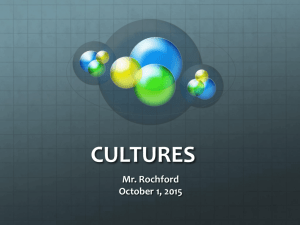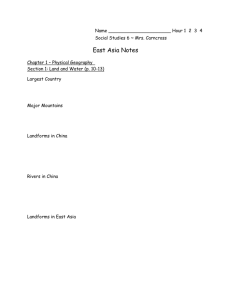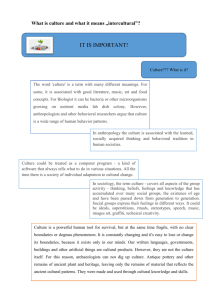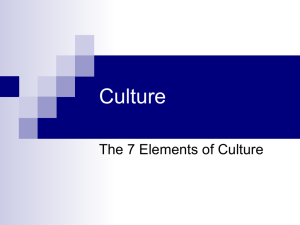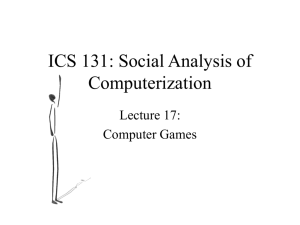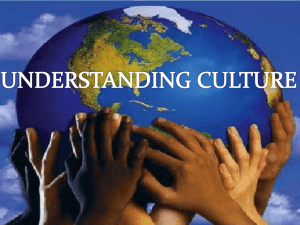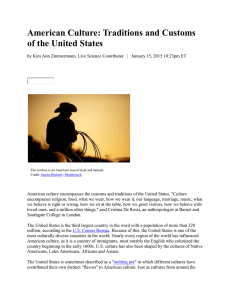File
advertisement
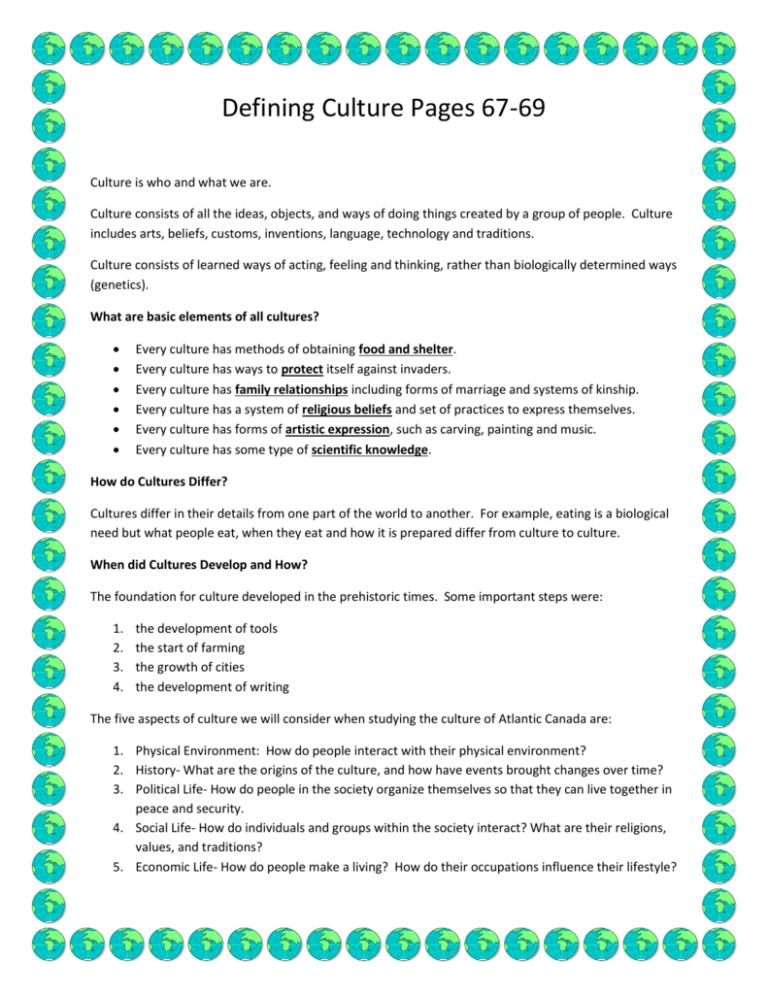
Defining Culture Pages 67-69 Culture is who and what we are. Culture consists of all the ideas, objects, and ways of doing things created by a group of people. Culture includes arts, beliefs, customs, inventions, language, technology and traditions. Culture consists of learned ways of acting, feeling and thinking, rather than biologically determined ways (genetics). What are basic elements of all cultures? Every culture has methods of obtaining food and shelter. Every culture has ways to protect itself against invaders. Every culture has family relationships including forms of marriage and systems of kinship. Every culture has a system of religious beliefs and set of practices to express themselves. Every culture has forms of artistic expression, such as carving, painting and music. Every culture has some type of scientific knowledge. How do Cultures Differ? Cultures differ in their details from one part of the world to another. For example, eating is a biological need but what people eat, when they eat and how it is prepared differ from culture to culture. When did Cultures Develop and How? The foundation for culture developed in the prehistoric times. Some important steps were: 1. 2. 3. 4. the development of tools the start of farming the growth of cities the development of writing The five aspects of culture we will consider when studying the culture of Atlantic Canada are: 1. Physical Environment: How do people interact with their physical environment? 2. History- What are the origins of the culture, and how have events brought changes over time? 3. Political Life- How do people in the society organize themselves so that they can live together in peace and security. 4. Social Life- How do individuals and groups within the society interact? What are their religions, values, and traditions? 5. Economic Life- How do people make a living? How do their occupations influence their lifestyle? Culture consists of all products of human work: paintings, dances, music, food, clothing, literature, where we shop, our homes, our technologies, even the cars we choose to drive. The term used to describe how we learn about culture is transmission. Older generations transmit or teach their knowledge and skills to younger generations, thus preserving culture. This passing on of culture is an important part of culture. Many people take great pride in teaching their children and grandchildren how it was when they were young. And nowadays, young people are getting to teach their families about all the latest technologies! In order for us to learn about cultures and human characteristics we look to the work of anthropologists. Through their work, we can see how different cultures all over the world are, and anthropologists have coined the term cultural diversity. Questions: Answer the following questions in your scribblers. Make sure to be complete in your response as these will become your study material sheets for your June exam! 1. Consider the list of common cultural characteristics anthropologist George P. Murdock came up with. What five are most important to you? Why 2. Why do you think these characteristics are common across cultures? 3. Which of the following list have to do with culture? a) b) c) d) e) f) g) h) i) j) k) l) m) n) eye colour eating with chopsticks values and traditions long fingers fingernail polish school rules a keen sense of hearing a keen sense of humour hair colour hair length our reliance on technology childhood obesity slang freckles 4. What do you do in your spare time? Explain how the way you spend your spare time is a reflection of your culture. Be sure to include some of your centres of culture and some cultural topics you and your friend might discuss.


